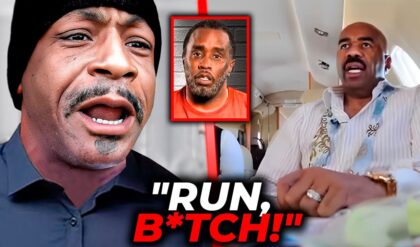The Complex Legacy of Suge Knight: A Reflection on Hip-Hop’s Tragedies
Introduction
The world of hip-hop has always been intertwined with tales of triumph and tragedy. Among the prominent figures in this narrative is Suge Knight, the co-founder of Death Row Records. His life is a tapestry woven with moments of brilliance and controversy, encapsulating the struggles and triumphs of the genre. The following exploration seeks to delve into Knight’s perspectives on the tragedies that have befallen some of hip-hop’s brightest stars, particularly Tupac Shakur and The Notorious B.I.G., as well as the broader implications of the culture that shaped them.
The Early Years and Rise to Fame
Suge Knight’s ascent in the music industry is a story of ambition and opportunism. After founding Death Row Records in 1991, he quickly made a name for himself by signing high-profile artists like Dr. Dre, Snoop Dogg, and Tupac Shakur. The label became synonymous with West Coast hip-hop and the gangsta rap movement. However, this success was not without its shadows. Knight’s reputation for intimidation and controversy often overshadowed the music he produced, creating a complex legacy that is hard to untangle.
Tupac Shakur: A Life Cut Short
The relationship between Suge Knight and Tupac Shakur is often romanticized as a brotherhood, yet it was fraught with tension and challenges. Their partnership blossomed in a turbulent era of hip-hop, marked by East Coast-West Coast rivalries and personal conflicts. Knight often spoke of Tupac’s influence, asserting that he took Death Row to new heights, revolutionizing the label’s image and sound. However, the dark cloud of violence loomed over their success.
The infamous shooting incident on September 7, 1996, in Las Vegas marked a turning point in both their lives. Knight, who was driving the car with Tupac when he was shot, described the chaos of that night with haunting clarity. Despite being grazed by a bullet himself, his primary focus was on getting Tupac to the hospital. Their final conversations were filled with camaraderie and laughter, a stark contrast to the gravity of the situation. “Pac saved my life,” Knight recalled, emphasizing their bond and the surreal nature of their experience.
The Notorious B.I.G.: The Other Side of the Coin
The murder of The Notorious B.I.G. in 1997 is another chapter in the grim history of hip-hop. Knight’s thoughts on Biggie reveal a sense of loss and recognition of the talent that was cut short. He maintained that Biggie’s potential was immense and that he could have reached even greater heights. “Biggie was incredible,” Knight stated, hinting at the possibility that, had he lived, Biggie could have transcended the genre and changed the landscape of music.
Knight’s assertions about the East Coast-West Coast rivalry often lead to speculation about his involvement in the violence that marred that era. He distanced himself from the accusations, suggesting instead that both Tupac and Biggie were victims of a systemic problem within the industry—a culture of violence and exploitation fostered by the very executives who control the music business. “Both of these dudes were assassinated in some kind of way,” he stated, hinting at a larger conspiracy that continues to haunt hip-hop.
The Culture of Violence in Hip-Hop
Knight’s commentary on the violence within hip-hop is particularly poignant. He argued that the culture often leads artists to a path of self-destruction, influenced by a legacy of exploitation and abuse in the industry. The phrase “the abused become the abuser” resonates deeply in this context, suggesting that the trauma experienced by artists often perpetuates a cycle of violence and mistrust.
He expressed concern over the mentorship in the industry, suggesting that many young artists are guided by figures who may have their own agendas rather than genuine interests in their welfare. Knight’s belief that the problems stem from the top—executives and producers who exploit young talent—calls for a reevaluation of how the industry operates and treats its artists.
Legacy and Reflection
As time has passed, Knight’s reflections reveal a man shaped by the choices he made and the environment in which he thrived. His candid comments about the music industry expose the underbelly of a world where artists are often caught in a web of violence and betrayal. The untimely deaths of Tupac and Biggie remain painful reminders of what can happen when ambition and rivalry spiral out of control.
In his view, the culture of hip-hop is at a crossroads. The tragedies of the past serve as cautionary tales for the present and future generations. The music industry must confront its demons and seek to create an environment that nurtures rather than exploits talent.
Conclusion
Suge Knight’s narrative is not just a reflection of his personal experiences but also a commentary on the broader hip-hop culture. The stories of Tupac Shakur and The Notorious B.I.G. illustrate the high stakes of fame in a world fraught with danger. As the industry continues to evolve, the lessons learned from these tragedies must be heeded to prevent repeating the same mistakes. Knight’s legacy, while controversial, serves as a crucial part of understanding the intricate relationship between music, violence, and the pursuit of success in the ever-evolving landscape of hip-hop.





